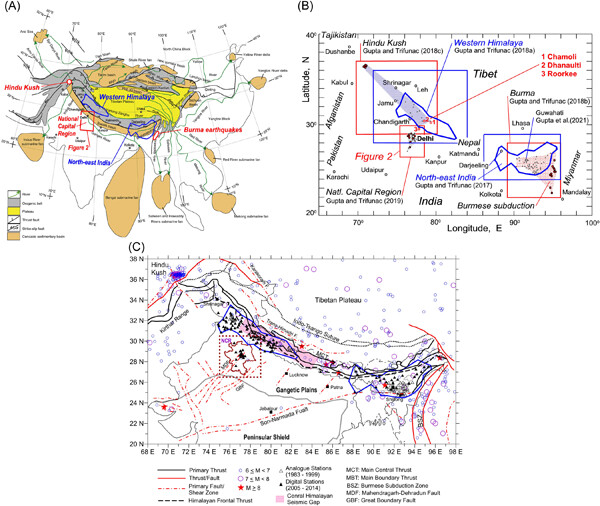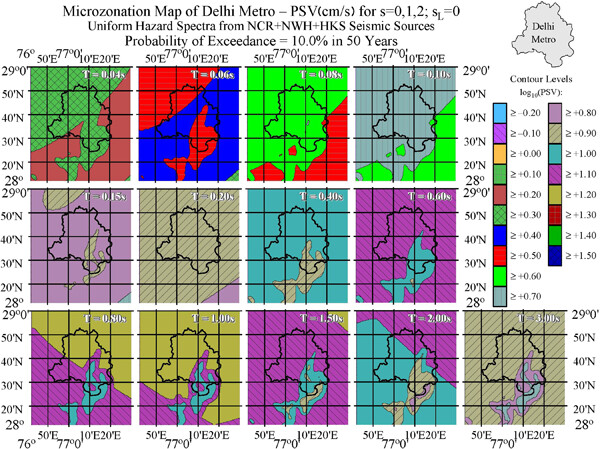Journal list menu
Export Citations
Download PDFs
ISSUE INFORMATION
RESEARCH ARTICLES
Seismic microzoning of the Delhi metropolitan area, India— I: Seismicity modeling
- Pages: 115-137
- First Published: 08 August 2022

This is part I of our seismic microzoning study of Delhi, India, metropolitan area, which presents the modeling of the seismicity. The a and b values of Gutenberg–Richter law, the maximum magnitude, Mmax, and the predominant focal depths, H, were estimated for a large region (24°–33° North latitude and 72°–82° East longitude), with a grid size of 0.1°. Seven area types of seismic sources are first identified based on a detailed seismotectonic evaluation of the region and, then, their seismic activity parameters are estimated by compiling a comprehensive catalog of 4483 past earthquakes with magnitudes of 2.0 or more between 1720 and 2020.
Seismic microzoning of the Delhi metropolitan area, India—II: Hazard computation and zoning maps
- Pages: 138-163
- First Published: 08 August 2022
Near-fault ground motion effects on pounding and unseating using an example of a three-span, simply supported bridge
- Pages: 164-195
- First Published: 08 August 2022
A seismic emergency performance optimization model for infrastructure systems under demand differences: A case study in China
- Pages: 196-210
- First Published: 08 August 2022

This study proposed a seismic emergency performance optimization model for infrastructure systems under demand differences. The model considered different seismic intensities, aiming at maximizing the effects of resilience enhancement measures to meet the expected performance of residents within the resource constraints. In addition, the model set the baseline for the optimization results by means of three functionality variables in earthquake scenarios.
Data-driven probabilistic curvature capacity modeling of circular RC columns facilitating seismic fragility analyses of highway bridges
- Pages: 211-224
- First Published: 08 August 2022
Probabilistic seismic performance of pylons of a cable-stayed bridge under near-fault and far-fault ground motions
- Pages: 225-240
- First Published: 08 August 2022






